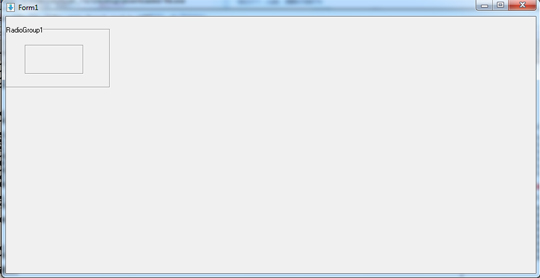TROJANSPY.WIN32.LOKI.AW.HP
Windows


Threat Type: Trojan Spy
Destructiveness: No
Encrypted: Yes
In the wild: Yes
OVERVIEW
This Trojan Spy arrives on a system as a file dropped by other malware or as a file downloaded unknowingly by users when visiting malicious sites.
TECHNICAL DETAILS
Arrival Details
This Trojan Spy arrives on a system as a file dropped by other malware or as a file downloaded unknowingly by users when visiting malicious sites.
Installation
This Trojan Spy drops the following files:
- %Application Data%\{Random Characters}\{Random Characters}.lck
(Note: %Application Data% is the current user's Application Data folder, which is usually C:\Documents and Settings\{user name}\Application Data on Windows 2000, XP, and Server 2003, or C:\Users\{user name}\AppData\Roaming on Windows Vista, 7, and 8.)
It drops the following copies of itself into the affected system:
- %Application Data%\{random characters}\{random characters}.exe
(Note: %Application Data% is the current user's Application Data folder, which is usually C:\Documents and Settings\{user name}\Application Data on Windows 2000, XP, and Server 2003, or C:\Users\{user name}\AppData\Roaming on Windows Vista, 7, and 8.)
It creates the following folders:
- %Application Data%\{random characters}
(Note: %Application Data% is the current user's Application Data folder, which is usually C:\Documents and Settings\{user name}\Application Data on Windows 2000, XP, and Server 2003, or C:\Users\{user name}\AppData\Roaming on Windows Vista, 7, and 8.)
It adds the following mutexes to ensure that only one of its copies runs at any one time:
- F763FD6CB32A01D7B8238AA4
It terminates itself if it finds the following processes in the affected system's memory:
- procexp64exe
- procmon64.exe
- procmon.exe
- ollydbg.exe
- procexp.exe
- windbg.exe
Process Termination
This Trojan Spy terminates the following processes if found running in the affected system's memory:
- avastsvc.exe
- aavastui.exe
- avgsvc.exe
- iavgui.exe
Information Theft
Upon execution of the affected application, it gathers the following information:
- User name
- Computer Name
It attempts to steal stored account information used in the following installed File Transfer Protocol (FTP) clients or file manager software:
- AbleFTP10
- AbleFTP11
- AbleFTP12
- AbleFTP13
- AbleFTP14
- AbleFTP7
- AbleFTP8
- AbleFTP9
- ALFTP
- Automize10
- Automize11
- Automize12
- Automize13
- Automize14
- Automize7
- Automize8
- Automize9
- BlazeFtp
- Cyberduck
- DeluxeFTP
- EasyFTP
- ExpanDrive
- Far
- Far Manager
- Far2
- Fastream
- FileZilla
- FlashFXP
- FTP Now
- FTPBox
- FTPGetter
- FTPInfo
- FTPShell
- GHISLER
- GoFTP
- JaSFtp10
- JaSFtp11
- JaSFtp12
- JaSFtp13
- JaSFtp14
- JaSFtp7
- JaSFtp8
- JaSFtp9
- LinasFTP
- MyFTP
- NexusFile
- Notepad++ NppFTP
- NovaFTP
- SftpNetDrive
- sherrod FTP
- SmartFTP
- Staff-FTP
- Steed
- SuperPutty
- Xftp
It attempts to steal stored email credentials from the following:
- Foxmail
- OUTLOOK
- pocomail
- GmailNotifierPro
- Opera Mail
- Mail2
- ymail
- TrulyMail
It attempts to get stored information such as user names, passwords, and hostnames from the following browsers:
- 360Browser
- Chrome
- ChromeSxS
- Chromium
- ChromiumViewer
- Chromodo
- Citrio
- CocCoc
- Comodo
- Coowon
- Cyberduck
- Epic Privacy Browser
- Firefox
- Iridium
- Lunascape
- MapleStudio ChromePlus
- Mustang Browser
- Nichrome
- Opera
- Orbitum
- QupZilla
- RockMelt
- Spark
- SuperBird
- Titan
- Torch
- Vivaldi
- YandexBrowwer
Stolen Information
This Trojan Spy sends the gathered information via HTTP POST to the following URL:
- http://{BLOCKED}p.co/{BLOCKED}oo/kertyuiodgf/fre.php
Other Details
This Trojan Spy does the following:
- Steals credentials from the following password managers:
- Enpass
- RoboForm
- 1Password
- Steals information from the following sticky notes:
- To-Do DeskList
- stickies
- NoteFly
- Conceptworld
- Sticky Notes
- Steals credentials from the following instant messaging application:
- .purple
- Displays the following if the local time is less than January 2016

SOLUTION
Step 1
Note that not all files, folders, and registry keys and entries are installed on your computer during this malware's/spyware's/grayware's execution. This may be due to incomplete installation or other operating system conditions. If you do not find the same files/folders/registry information, please proceed to the next step.
Step 2
Before doing any scans, Windows XP, Windows Vista, and Windows 7 users must disable System Restore to allow full scanning of their computers.
Step 3
Restart in Safe Mode
Step 4
Search and delete this folder
- %Application Data%\{random characters}
Step 5
Restart in normal mode and scan your computer with your Trend Micro product for files detected as TROJANSPY.WIN32.LOKI.AW.HP. If the detected files have already been cleaned, deleted, or quarantined by your Trend Micro product, no further step is required. You may opt to simply delete the quarantined files. Please check this Knowledge Base page for more information.
Did this description help? Tell us how we did.



